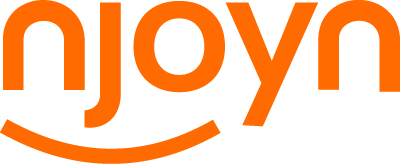
How can a City Leverage an Applicant Tracking System?
Every HR department has its own specific hiring requirements. When looking for applicants for a city, government, law firm or financial institution, there are specific attributes to satisfy. We are not going to go into details about all of these requirements, however we are going to take a look at how these types of industries can leverage an Applicant Tracking System (ATS). In the following post we will cover:
- How to find good candidates faster
- Effectively prescreening applicants
- Ranking Applicants
- Finding good candidates faster: building applicant profiles
How do you track upwards of 200 applicants for one job? By using a recruitment system that’s up to the task.
The City of St. Albert, Alberta, faces this challenge when jobs at the city become available. For instance, administrative assistant postings or openings in the public works department can attract up to 300 applications. Any methods or tools that can turn up promising candidates quicker helps human resources (HR) staff fill the position sooner rather than later.
Sometimes the recruitment process can come from another part of the organization, say the head office or another office. If the hiring system is not the same, the quality of the candidates will not be graded by the same criteria. In this case, the resumes that are set over can still be added to the system and a profile for each candidate will be built, without having to build it out manually.
- Effectively pre-screening applicants
In some places, pre-screening job applicants can be a luxury, if it’s done at all. The right recruitment solution can make pre-screening a realistic part of the hiring process.
Several years ago, the City of St. Albert did no pre-screening. Recruiting staff would instead read every candidate’s application, but this seemingly comprehensive onboarding exercise left important questions unanswered and wasted considerable time.
Simple questions were left for the first round of interviews. For example:
- What was the applicant’s availability?
- How many hours were they willing to work?
These questions could easily have been addressed prior to the interview stage. Here is how pre-screening helped during a hiring session for summer water park attendants. Every applicant answered crucial questions like:
- What certifications do you have?
- How many hours are you willing to work?
- Are you available during key times?
- Will you be taking holidays during the summer?
Now, if, during one of the pre-screening questions, an important operational need was not met, the City was not required to read the resume. Rankin said they read only resumes of candidates who meet our operational needs.
Rankin is self-taught on this – it’s that important to her – and she’s working with Njoyn’s recruitment tracking experts to improve her usage of these questions. They use pre-screening questions for more than 75% of competitions.
The city needs systems that won’t intimidate candidates, as the applicants aren’t always technologically savvy. It integrates beautifully for the City and its hiring process. Noting that Njoyn automatically attaches answers to the right applications.
Not to mention that within the Applicant Tracking System, you can send selected candidates other sets of questions after passing the initial set of questions and requirements. The abilities are endless, and the best part is they are all tracked in one system.
- Ranking Applications
After the pre-screening process, applicants can be ranked. When reviewing an application for a given position, a recruiter can put between one and five stars on the application. There’s also an “X” and the option to leave this field blank.
The City of St. Albert uses this feature on all job competitions. Recruiters can change rankings as they progress through resumes and realize that, compared to resumes they review later in the process, other resumes reviewed earlier deserve different rankings.
This isn’t one of the marquee applicant tracking tools Njoyn offers, but Rankin doesn’t mind its “hidden jewel” nature.
“It makes screening so much easier, especially in really large competitions with 200 or 300 people,” Rankin says. “Ranking is a godsend for us!”
To read more about the City’s success with an Applicant Tracking System, click here to read the case study.
Search
Most Popular Posts
- 5 Recruitment Challenges Public Organizations Struggle With
- Njoyn’s New Interview Scheduling Module
- ‘People Enablement’ Is the Human-Resources Trend You Can’t Ignore
- 5 Tips to go from Interview to On-boarding with the Right Candidate
- Challenges The City of St. Albert Faced Before Implementing an Applicant Tracking System
150 Commerce Valley Drive West. Markham, ON. L3T 7Z3. Tel: +1 905 695 6560
